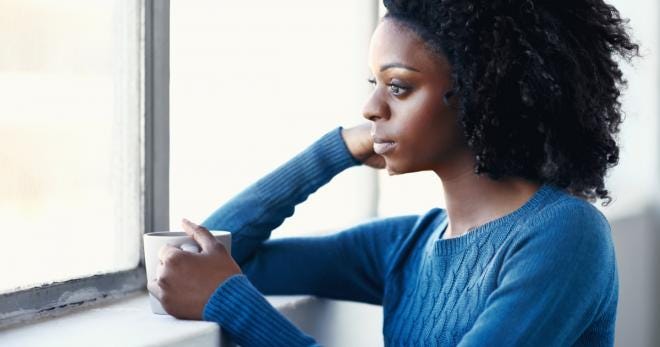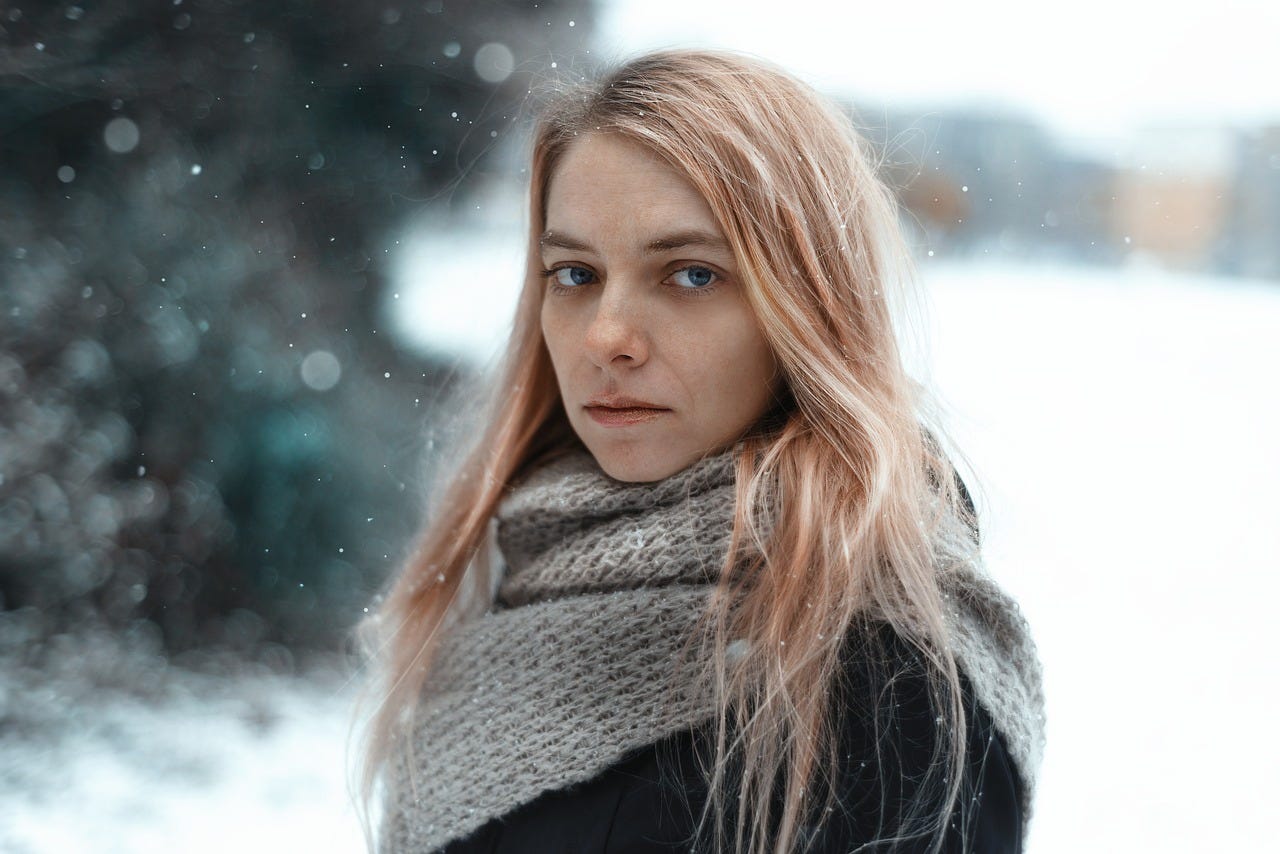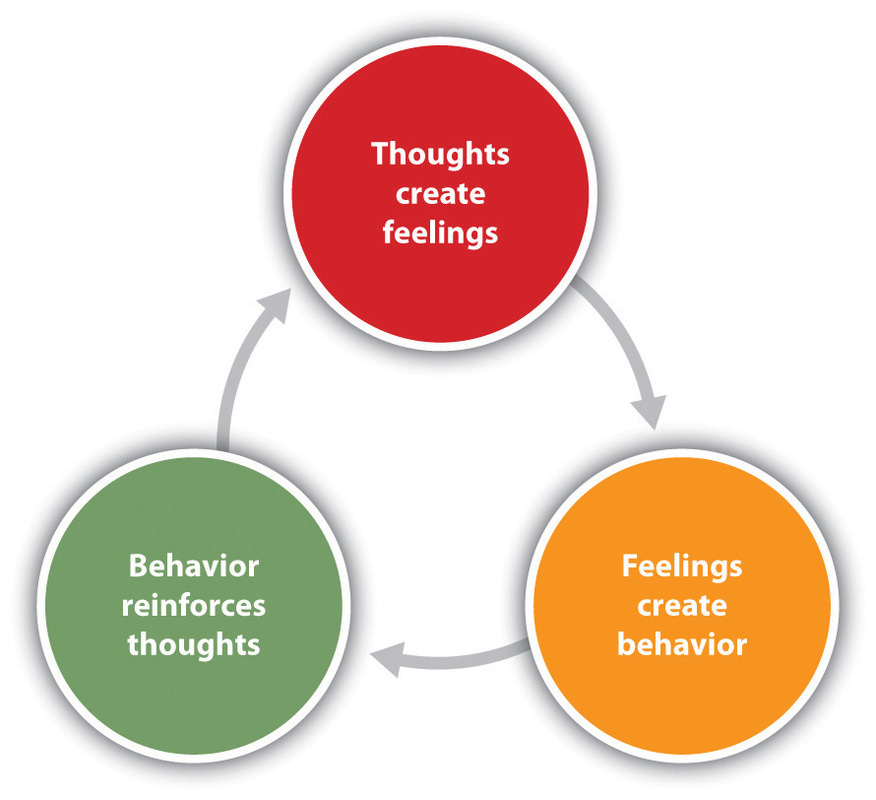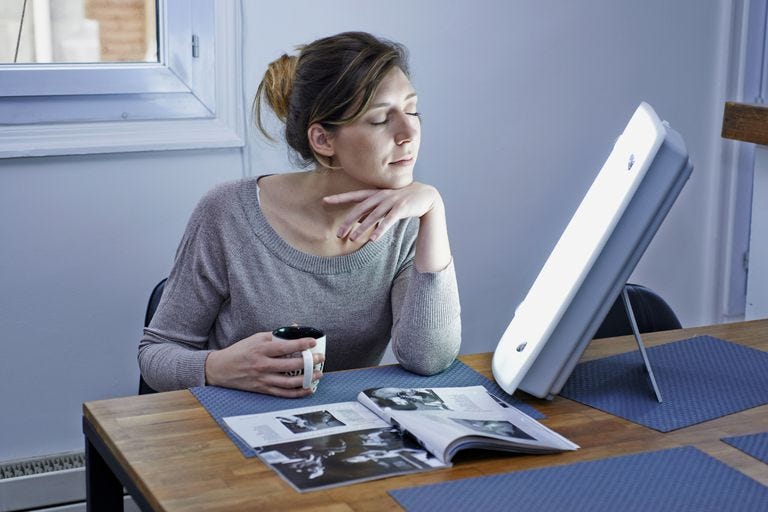Coping with Seasonal Affective Disorder (SAD)
Click to read the full story: Coping with Seasonal Affective Disorder (SAD)
Only if you have suffered from seasonal affective disorder will you probably know what it is. Maybe some of us have suffered from this malady without even knowing that it could have been a seasonal affective disorder. So let’s look at it in a little depth, and you will soon see if you might have been a sufferer once and how to cope with it better should it come your way again.
Seasonal Affective Disorder (SAD) is a kind of depression, related to the changing seasons, beginning and ending more or less the same time each year. And if you are like a lot of other people, you will be aware that your symptoms would have started sometime around the fall and then would have continued into winter, kind of eating away at your energy and making you feel lethargic, moody, and shall we say – SAD. SAD is noted to start disappearing at the start of spring and early summer. If you have suffered from the “winter blues,” it could well have been SAD, and the best medicine is to try your best to keep your motivation and mood up during these times, because when you are feeling down, sometimes other maladies sneak in.

There is, however, a difference between having the winter blues and SAD – apparently between September and March, a lot of people do experience symptoms of having the ‘winter blues’ which means they don’t enjoy or like the darker mornings, the shorter days, eating more and getting up in the dark to go to work etc. – many find it difficult, even an uphill struggle. But when you have SAD, the feelings mentioned above are actually heightened, and even additional symptoms can be experienced. Many times the treatment for this condition, SAD, will include some light therapy such as phototherapy, some psychotherapy, and some medications.

How is SAD diagnosed?
There aren’t really any medical tests which help a doctor outright to diagnose you with SAD. It is diagnosed on the basis of examining carefully your history of depression and maybe some medical tests. If the SAD symptoms are severe, doctors might prescribe antidepressants such as Paxil, or Zoloft, or Prozac. Some doctors will even recommend you start taking these prescribed drugs before SAD sets in and then continuing with it until around the time when symptoms normally disappear or ease up, such as in the spring and summer months. That means a diagnosis won’t yet be made until you have, say, 2 or 3 seasons in a run with the same symptoms.
The health professionals will figure out that you have had depression that starts at the same seasonal time every year and that you don’t have any other episodes of depression during other seasons. SAD is a bit tricky in that often, you kind of have to suffer through two winters of depression to actually diagnose it, which is not great if you are suffering and you want to feel better. But luckily, you can do something about it yourself from natural sources and ones that are prescription free.
Symptoms to look out for
If you have suffered from SAD, you will probably know exactly what the symptoms are – a bit of depression, feelings of sadness, feeling tired, irritable, very little energy, battling to sleep, and not being able to concentrate. If your symptoms were more severe, you might even have felt a feeling of helplessness, worthlessness, no hope – your weight might have changed and worse and not to be excluded, sometimes even feelings of suicide might have come your way.
Remember, there different types of depression as well such as clinical depression, major depression, bipolar disorder and then this one, seasonal affective disorder as well. Symptoms and levels of intensity can vary from person to person.
Who is likely to get SAD?
It has been said too, that the closer a person lives to the equator, the less likely you will develop SAD. So a person living in places like California or Florida might not have symptoms and then start experiencing SAD symptoms when they move
away to places that are not so temperate. One in every ten people are said to develop this SAD pattern during their lifetime. It affects 9.5% of people living in northern Finland and 9.9% of people in Alaska, but only affects 1.4% in sunny Florida, researchers say. This year’s winter in Moscow, people enjoyed just 6 minutes of sunshine in December compared to the 18 hours that they normally enjoy.Research shows that women are actually four times more likely to have this problem over men.
The rates of SAD are also high for those who do night time and evening shift over those who do it during the day. Those people who work for extended periods without the sun in their lives like miners or those in submarines; are more likely to feel the effects of SAD.
Sometimes alcohol abusers or people with mood disorders are also at greater risk of developing SAD.
Strangely enough, there is a fascinating difference between people who are classified as having traditional depressive symptoms and those who have SAD symptoms when it comes to eating. Those with SAD are known to want to eat more, and they are inclined to gain weight with increased cravings for sweets and carbohydrates, whereas those who suffer from depressive symptoms usually have decreased appetite.

Research has taken place from the National Institute of Mental Health which believes that SAD occurs because people don’t have enough light. This led to the development of phototherapy, or light therapy, which has been shown to be very successful in treating those with SAD, 80% of whom noted that many of their symptoms were less after they were succumbed to as little as 4 days of full-on light therapy for just 2 hours a day. In hardware stores, you can find these full spectrum light bulbs with strengths of a minimum of 2500 lux.
Light therapy appears also to help people to reduce their appetite by reducing their cravings for food.
Light therapy was also known to elevate the moods of people with SAD and to improve their sleeping habits. It is unfortunate though, that those who have to stop using the light therapy after a couple of days start experiencing the same symptoms again. It is proven that consistency is needed to get relief from the symptoms. People need to make a point of being outside to expose themselves to natural sunlight when it is available in the winter months.
If you have SAD in winter you will probably feel like oversleeping; your appetite will change, with cravings for food with high carbs. You can possibly gain weight, and you will probably feel tired with low energy all the time. SAD in summer, sometimes known as “summer depression” could include trouble with sleeping, a poor appetite, anxiety, and weight loss.

It is still not known what really causes SAD
Unfortunately, specific causes of seasonal affective disorder still are not fully known, but there are some factors that might be of importance, such as:
When your biological clock (circadian rhythm) is disrupted. With reduced levels of sunlight, particularly in the fall and winter, SAD can “set in.” This is because decreased sunlight can disrupt the internal clock.
Serotonin levels drop off: The neurotransmitters of your brain drop, and this can affect your mood and play a role in bringing on SAD. Reduced sunlight is known to cause a drop in serotonin which can trigger off depression.
Melatonin levels are known to change: Changes in the seasons can disrupt the balance of the body’s levels of melatonin, and this can play a role in mood and sleeping patterns.

Are there risk factors to SAD?
As mentioned above, SAD is noticed more in women than in men. It also appears to manifest itself more in younger people than in older people. Take a look at some factors that might increase the risks of SAD:
You have a family history: People with SAD might well have family who has experienced SAD or other types of depression.
You have either had bipolar disorder or major depression. SAD can get worse if you have had any of these conditions.
You live far from the equator. SAD seems to be more prevalent in people who live far north or south of the equator, and it could be due to decreased sunlight during the winter and days that are longer in the summertime.
When any person suffers from SAD, it is not something just to take lightly. Look at other types of depression. Unless they are dealt with, they can get worse and SAD is no exception. Look at these problems that can come your way if you allow it to carry on:
You withdraw from the social scene.
You suffer from problems at school, college, or work.
There is substance abuse.
You can suffer from further mental issues like anxiety or eating disorders.
Your behavior could be suicidal or you have suicidal thoughts.
Fortunately, there are treatments which can prevent complications, and it needs to be nipped in the bud before symptoms deteriorate.

You are what you eat
Some governments recommend that everyone takes Vitamin D supplements. It is believed that there is a link between the benefits of vitamin D and SAD (which can prepare you for the onset of winter and the varying changes in the seasons). Vitamin D deficiency has been associated with anxiety and depression, poor immunity and depression during winter. Governments reckon that people aren’t getting enough of this vitamin through their diets alone.
A diet should be rich in protein and low in refined carbohydrates, which helps to sustain energy levels, helping you to feel satisfied and sustained. Nutrient dense foods could be nuts, oil, fish, avocado and even something like spirulina – all supply essential fatty acids which support the brain tissue and your hormonal levels. Apart from the high level of fats, insoluble and soluble fibers are needed, as well as probiotics, because they help to support toxin removal through the digestive tract. Building up a healthy gut is your first line of defense in winter.
The best solutions
Omega-3 and 6 fatty acids will help to support the nervous system, cognitive function, and hormonal balance.
Plenty of the B vitamins to help the nervous system function at its best and to produce healthy hormones.
Probiotics for healthy gut flora, as mentioned above.
It is imperative that you follow a well-balanced diet such as an anti-inflammatory diet.Restorative restful sleep is completely necessary if you are searching for health and happiness.
Don’t stop with your exercises: For some people, it’s not easy to go to the gym even when you feel good and even worse when you feel under par. if you want to be healthy, happy, and mentally fit, exercise is very vital. Exercises are actually proven to help with all the traditional types of depression and SAD is no exception. When you are active, you increase the chemicals in the brain that make you feel good, easing up on the depressive feelings and also brain fog. Just walking 30 minutes on a treadmill for 10 days in a row can significantly reduce your feelings of depression. Research shows too, that it’s the consistency of doing exercises regularly that is more beneficial for you than the length of your exercise routine or the intensity of it – when you get the most positive results – remember to keep moving.
Get outside. When you see the rays of sunshine, try and sleep with your curtains open to get the sunshine in. Your body and brain will thank you for this natural tonic, and it will be even better if you can do your exercises outside as well.

Another treatment is CBT
CBT, or cognitive behavioral therapy, is a crucial part of psychology today, formulated to treat depression. There is even renewed interest in it for SAD. Recent studies published in the American Journal of Psychiatry, claim that CBT could actually be more beneficial to SAD patients than what light box therapy is in the long run. In a study, 177 people suffering from SAD, were either given light therapy or cognitive behavioral therapy. They were checked on over the following 2 winters to see how they had coped.
It was found that in the first winter season, the light therapy as well as the CBT both benefited equally in reducing their depression symptoms. But by the time the second winter had come past, the CBT patients proved to be in the lead. Only 27.3% of CBT patients claimed their depression came back the next winter against 45.6% of those who had received the light therapy. One of the authors of the study, Kelly Rohan, put it down to the fact that the CBT patients learned coping and skill mechanisms which they could use at any time while the people using the light therapy, even though being in the light, were not in control of their emotions.

The Lightbox
If you see that your outdoor hours are not long and are actually limited, then a light box is worth having. Those with SAD say they saw a 60-80% improvement in their disposition, and that as far as they were concerned, this was the best treatment for their SAD. What is a lightbox – well, the light therapy gives you exposure to artificial light that is bright enough for you to enjoy during the winter months. SAD patients can use light therapy every day, from the start of their symptoms until the spring when more often than not, the SAD resolves.
Most SAD patients need around 15-30 minutes of this light therapy every day and notice an improvement in the way they feel after 2-4 days already, with big improvements being felt within 2 weeks. It is recommended that patients stay consistent with their treatment during the winter months, in fact, it is crucial. It is often recommended that the lightbox treatments occur in the morning because if it used in the evening, people might find it difficult to fall asleep. You can get light therapy boxes without prescription. Unfortunately, they are noted to come with side effects such as eye strain and headaches. This is because of the UV exposure. It might be important for you to see a light therapy specialist so that you know that you are getting the right amounts of light and also so you can filter out dangerous unwanted UV rays.
NOTE: Even those not suffering from SAD can find this helpful in winter, especially when there are those stretches of long gray days.
Helpful Resources:
If you find yourself suffering from season affective disorder or depression, contact one of these great organizations as they’ll be able to help.
Nami – Helpline: 800-950-6264
National Suicide Prevention Lifeline: 1-800-273-TALK (8255)
National Hopeline Network: 1-800-SUICIDE (784-2433)
National Youth Crisis Hotline: 1-800-448-4663
Substance Abuse and Mental Health Services Administration (SAMHSA): 1-800-662-HELP (4357)

Conclusion
Depression, no matter which type we have mentioned, can make a person feel pretty isolated and when people are able to receive support from friends and family who reach out to them, it helps to ease the burden. If you are a person who thinks that you could be at risk of seasonal affective disorder, and you might not be close to family and friends to reach out to, it is nevertheless important that you do reach out to a health professional. They might not be able to diagnose you in your first season, but if you believe that SAD could be “taking hold of you,” you can discuss it with him and try out the many wonderful natural solutions until you can get diagnosed the following season.
A study done in 2013 showed that by using light boxes beginning 30 minutes before waking up was able to improve people’s cognitive performance and mood for the rest of the day thereafter. And British rowing, swimming, and cycling teams use these dawn simulators on their athletes to help them in their early morning training sessions. Today, light therapy boxes or other devices aren’t seen as strange voodoo science says Ruth Jackson from Lumie, a company that one of the first in line to make sunrise alarms. When it gets dark, the body produces more melatonin, preparing it to sleep.
The dawn light suppresses the melatonin, waking people up and giving them a boost for their day ahead. It’s called the circadian rhythm – it’s our internal body clock. And it’s often why experts believe that the blue light produced on our smartphones interfere with our sleeping patterns if we use them a lot before we go to bed. Red light, however, helps us to relax. Today you can get an app that works like a smart light bulb and which changes the colors. Bedside lamps, too, are now being turned into sunrise alarms which turn red for night time going to bed.
Certainly no one is claiming that light alone cures clinical depression and other types of depression and we also know that manufacturers love to make overblown claims on their products, so that they can sell them, but yes, there is starting to be growing evidence that if we manage our lighting, we can improve our sleep patterns and also put some vigor into your step. It’s time to see the light and banish those winter blues.
The post Coping with Seasonal Affective Disorder (SAD) appeared first on Movie TV Tech Geeks News By: Jackie Warner

